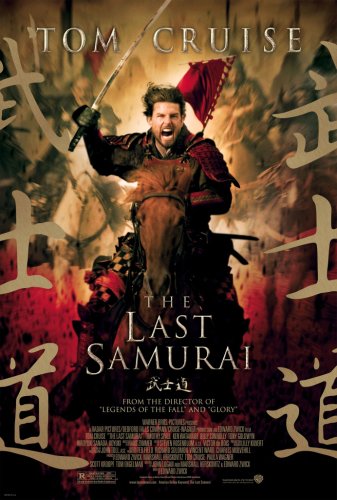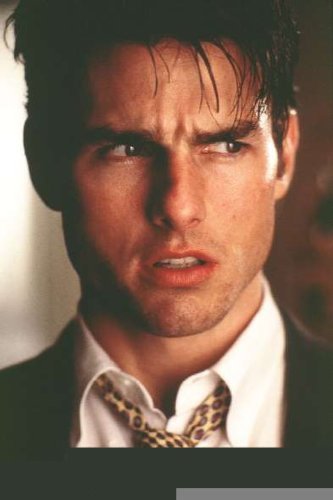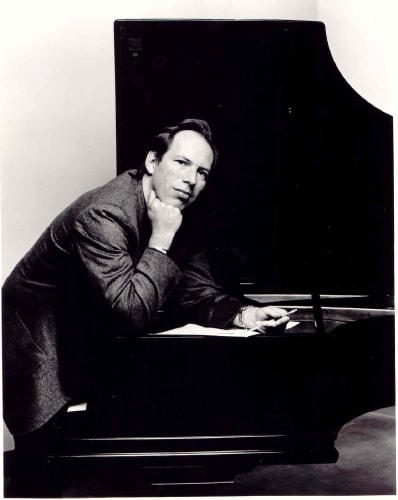| Fecha | Área | Bruto |
|---|---|---|
| 4 April 2004 | USA | USD 111,110,575 |
| 28 March 2004 | USA | USD 111,054,195 |
| 21 March 2004 | USA | USD 110,947,183 |
| 14 March 2004 | USA | USD 110,788,675 |
| 7 March 2004 | USA | USD 110,572,904 |
| 29 February 2004 | USA | USD 110,330,124 |
| 22 February 2004 | USA | USD 110,068,738 |
| 16 February 2004 | USA | USD 109,528,224 |
| 8 February 2004 | USA | USD 108,635,117 |
| 1 February 2004 | USA | USD 107,459,807 |
| 25 January 2004 | USA | USD 105,521,192 |
| 18 January 2004 | USA | USD 102,583,643 |
| 11 January 2004 | USA | USD 97,181,327 |
| 28 December 2003 | USA | USD 74,324,104 |
| 21 December 2003 | USA | USD 59,487,166 |
| 14 December 2003 | USA | USD 46,874,330 |
| 7 December 2003 | USA | USD 24,271,354 |
| 29 February 2004 | UK | GBP 11,688,667 |
| 22 February 2004 | UK | GBP 11,503,317 |
| 15 February 2004 | UK | GBP 11,110,865 |
| 8 February 2004 | UK | GBP 10,534,629 |
| 1 February 2004 | UK | GBP 9,630,327 |
| 25 January 2004 | UK | GBP 8,273,288 |
| 18 January 2004 | UK | GBP 6,126,251 |
| 11 January 2004 | UK | GBP 2,723,081 |
| 8 April 2004 | Worldwide | USD 456,758,981 |
| 2004 | Non-USA | USD 345,631,718 |
| 29 January 2004 | Germany | USD 13,761,639 |
| 22 January 2004 | Germany | USD 10,963,811 |
| 15 January 2004 | Germany | USD 6,315,526 |
| 8 April 2004 | Hungary | USD 886,000 |
| 1 April 2004 | Hungary | USD 872,000 |
| 25 March 2004 | Hungary | USD 817,000 |
| 18 March 2004 | Hungary | USD 747,000 |
| 11 March 2004 | Hungary | USD 602,000 |
| 4 March 2004 | Hungary | USD 353,000 |
| 25 July 2004 | Italy | EUR 18,127,004 |
| 18 July 2004 | Italy | EUR 18,122,481 |
| 4 July 2004 | Italy | EUR 18,117,076 |
| 30 May 2004 | Italy | EUR 18,113,867 |
| 25 April 2004 | Italy | EUR 18,112,861 |
| 11 April 2004 | Italy | EUR 18,111,279 |
| 4 April 2004 | Italy | EUR 18,110,118 |
| 28 March 2004 | Italy | EUR 18,104,393 |
| 14 March 2004 | Italy | EUR 18,078,821 |
| 7 March 2004 | Italy | EUR 18,043,663 |
| 29 February 2004 | Italy | EUR 17,968,753 |
| 22 February 2004 | Italy | EUR 17,785,308 |
| 15 February 2004 | Italy | EUR 17,441,854 |
| 8 February 2004 | Italy | EUR 16,883,133 |
| 1 February 2004 | Italy | EUR 15,859,473 |
| 25 January 2004 | Italy | EUR 13,805,490 |
| 18 January 2004 | Italy | EUR 10,401,420 |
| 11 January 2004 | Italy | EUR 4,640,957 |
| 11 February 2004 | Netherlands | EUR 2,936,550 |
| 29 February 2004 | Spain | EUR 17,956,402 |
| 22 February 2004 | Spain | EUR 17,402,617 |
| 15 February 2004 | Spain | EUR 16,665,104 |
| 8 February 2004 | Spain | EUR 15,636,720 |
| 1 February 2004 | Spain | EUR 14,155,802 |
| 25 January 2004 | Spain | EUR 11,824,639 |
| 18 January 2004 | Spain | EUR 8,624,460 |
| 11 January 2004 | Spain | EUR 4,266,786 |
| Fecha | Área | Bruto | Pantalla |
|---|---|---|---|
| 7 December 2003 | USA | USD 24,271,354 | 2,908 |
| 11 January 2004 | UK | GBP 2,723,081 | 430 |
| 16 January 2004 | Australia | USD 3,623,607 | 274 |
| 9 January 2004 | Austria | USD 565,405 | |
| 16 January 2004 | Belgium | USD 693,020 | |
| 16 January 2004 | Brazil | USD 1,661,510 | 218 |
| 9 January 2004 | Europe | USD 18,395,648 | 2475 |
| 30 January 2004 | Finland | USD 136,898 | |
| 16 January 2004 | France | USD 4,129,059 | |
| 15 January 2004 | Germany | USD 6,315,526 | 829 |
| 9 January 2004 | Germany | USD 3,845,859 | |
| 23 January 2004 | Hong Kong | USD 381,652 | 32 |
| 29 February 2004 | Hungary | USD 253,000 | |
| 16 January 2004 | Iceland | USD 46,507 | |
| 11 January 2004 | Italy | EUR 4,640,957 | 524 |
| 5 December 2003 | Japan | USD 2,630,243 | 86 |
| 11 January 2004 | Netherlands | EUR 687,646 | 102 |
| 23 January 2004 | Norway | USD 352,592 | |
| 25 January 2004 | Philippines | PHP 24,500,000 | 111 |
| 16 January 2004 | South Africa | USD 458,712 | 62 |
| 11 January 2004 | Spain | EUR 4,266,786 | 425 |
| 23 January 2004 | Sweden | USD 534,091 | |
| 9 January 2004 | Switzerland | USD 504,429 |
| Fecha | Área | Bruto | Pantalla |
|---|---|---|---|
| 4 April 2004 | USA | USD 29,918 | 102 |
| 28 March 2004 | USA | USD 64,517 | 168 |
| 21 March 2004 | USA | USD 90,896 | 220 |
| 14 March 2004 | USA | USD 126,668 | 281 |
| 7 March 2004 | USA | USD 166,205 | 339 |
| 29 February 2004 | USA | USD 151,370 | 136 |
| 22 February 2004 | USA | USD 391,141 | 220 |
| 16 February 2004 | USA | USD 635,469 | 267 |
| 8 February 2004 | USA | USD 693,214 | 441 |
| 1 February 2004 | USA | USD 1,203,487 | 808 |
| 25 January 2004 | USA | USD 2,177,479 | 1,115 |
| 18 January 2004 | USA | USD 3,707,472 | 1,403 |
| 11 January 2004 | USA | USD 4,550,419 | 1,901 |
| 4 January 2004 | USA | USD 7,373,719 | 2401 |
| 28 December 2003 | USA | USD 8,326,947 | 2,557 |
| 21 December 2003 | USA | USD 7,769,301 | 2,938 |
| 14 December 2003 | USA | USD 14,087,074 | 2908 |
| 7 December 2003 | USA | USD 24,271,354 | 2,908 |
| 29 February 2004 | UK | GBP 93,188 | 103 |
| 22 February 2004 | UK | GBP 189,494 | 170 |
| 15 February 2004 | UK | GBP 335,960 | 229 |
| 8 February 2004 | UK | GBP 493,601 | 298 |
| 1 February 2004 | UK | GBP 855,228 | 384 |
| 25 January 2004 | UK | GBP 1,236,008 | 417 |
| 18 January 2004 | UK | GBP 2,048,193 | 431 |
| 11 January 2004 | UK | GBP 2,723,081 | 430 |
| 29 January 2004 | Germany | USD 2,797,828 | 843 |
| 22 January 2004 | Germany | USD 4,648,285 | 846 |
| 15 January 2004 | Germany | USD 6,315,526 | 829 |
| 11 April 2004 | Hungary | USD 19,000 | |
| 4 April 2004 | Hungary | USD 22,000 | |
| 28 March 2004 | Hungary | USD 37,000 | |
| 20 March 2004 | Hungary | USD 52,000 | |
| 14 March 2004 | Hungary | USD 121,000 | |
| 7 March 2004 | Hungary | USD 162,000 | |
| 29 February 2004 | Hungary | USD 253,000 | |
| 29 February 2004 | Italy | EUR 100,506 | 39 |
| 22 February 2004 | Italy | EUR 215,926 | 75 |
| 15 February 2004 | Italy | EUR 372,324 | 130 |
| 8 February 2004 | Italy | EUR 648,389 | 187 |
| 1 February 2004 | Italy | EUR 1,400,840 | 330 |
| 25 January 2004 | Italy | EUR 2,295,949 | 482 |
| 18 January 2004 | Italy | EUR 3,995,656 | 528 |
| 25 January 2004 | Philippines | PHP 24,500,000 | 111 |
| 29 February 2004 | Spain | EUR 383,703 | 256 |
| 22 February 2004 | Spain | EUR 573,139 | 306 |
| 15 February 2004 | Spain | EUR 800,229 | 346 |
| 8 February 2004 | Spain | EUR 1,152,150 | 389 |
| 1 February 2004 | Spain | EUR 1,776,651 | 417 |
| 25 January 2004 | Spain | EUR 2,459,152 | 426 |
| 18 January 2004 | Spain | EUR 3,235,820 | 428 |
| 11 January 2004 | Spain | EUR 4,266,786 | 425 |




.jpg)
.jpg)









